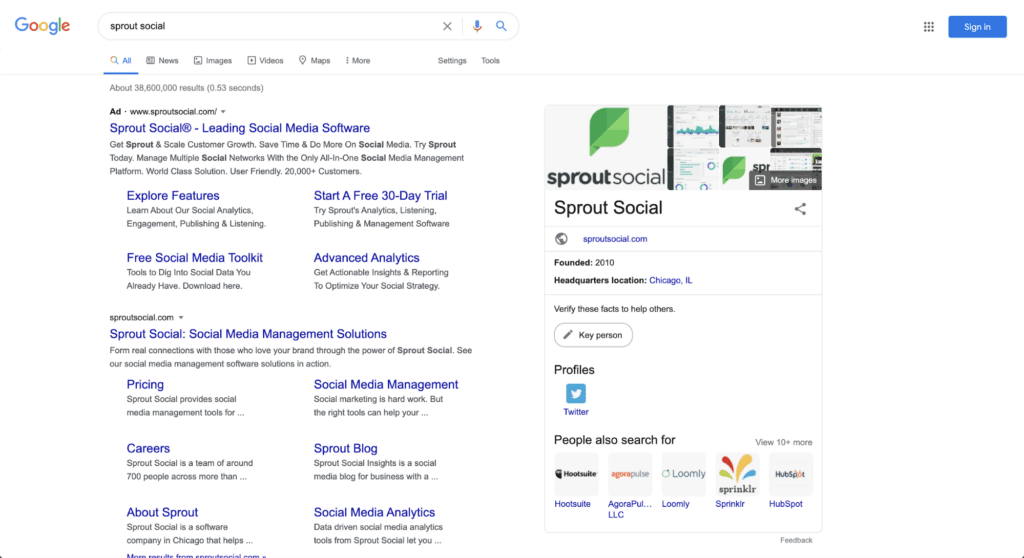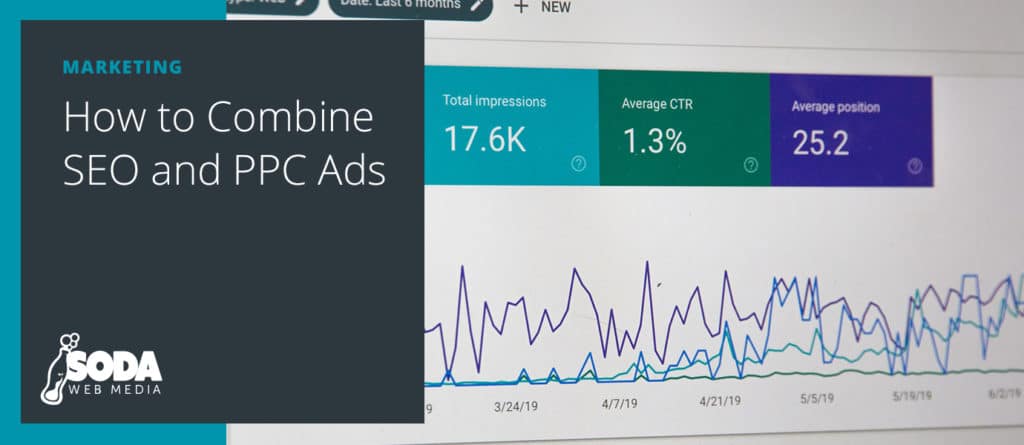If you’re involved in digital marketing, there are two three-letter words you need to know: SEO and PPC.
Chances are that you’ve already encountered these terms in your journeys across the web-o-sphere. But it’s also quite likely that you’ve only seen them mentioned as completely separate tools, not two sides of a holistic marketing strategy.
That’s about to change.
We’re going to break the paradigm and take a look at these two tools not as completely separate entities, but as complementary advertising mediums that can work together to create a unified whole. We’ll move from the abstract to the concrete so that you can not only get some practical tips but also understand the conceptual frameworks that underlie them.
By the end of this article, you’ll have a solid understanding of the differences and similarities between PPC and SEO marketing and a few ideas on how to get them working in tandem.
Inbound vs. Outbound Marketing
Let’s start with some high-level concepts.
Marketing can largely be broken down into two types: inbound and outbound marketing.
In the simplest terms possible, inbound marketing attempts to bring customers to your business, while outbound marketing attempts to bring your business to your customers.
For example, inbound marketing campaigns will use content marketing strategies to attract customers to your website through organic search traffic. Outbound marketing, on the other hand, will use ads or cold outreach campaigns to get your business in front of your audience.
You can think of it as hunting. An inbound hunter would set traps, and an outbound hunter would use their rifle.
For most businesses, it doesn’t make much sense to rely on only one of these methods. While some marketers may specialize in one or the other, it’s generally a good idea to ensure that you’re actively using both inbound and outbound marketing. Otherwise, you could reach a lead with an ad, only for them to be unable to find you again a few days later.
What Is SEO?
SEO (search engine optimization) is a form of inbound marketing. It attempts to draw customers to your website by optimizing it for search engines, like Google and Bing so that it appears near the top of the SERPs (search engine results pages).
There are lots of different ways you can improve your SEO, but the one we’re going to focus on here is content marketing. In this method, your goal is to write valuable content, typically targeted for specific keywords, or search terms, that are relevant to your business, in an attempt to drive traffic to your site.
For example, if you run a cloud-based education platform, you might post articles that target the longtail keyword (longer and more specific keywords that are more common when purchase intent is high) “benefits of cloud learning.” If you follow SEO best practices, your website will show up near the top of the SERP for that term, searchers will visit it, and you can introduce them to your sales funnel.
SEO is a fairly passive strategy: once you’ve set your bait by publishing your content, you wait for fish to swim by and bite. You won’t see results immediately, but when they start to come, they can come fast and consistently.
What Is PPC?
PPC stands for pay per click. It’s a form of outbound marketing in which an advertiser pays for clicks on advertisements that they run on web platforms such as Facebook, website ads, Google ads, etc.
As the name implies, the advertiser pays per click. So, if an advertiser has a budget of $10,000, and a website is charging $2 per click, that advertiser will get 5,000 clicks. Each time someone clicks on their ad, they pay the $2 fee.
Unlike SEO, PPC is not passive. It requires actively spending money to go out and get customers. If SEO is word of mouth, then PPC is the metaphorical sign spinning of the digital marketing space.
Does SEO Affect PPC? Does PPC Affect SEO?
The short answer is no. There is no direct link between PPC ads and the performance of SEO content. That means you’re not going to boost your site’s SEO by running PPC ads.
The long answer is still no, but you can potentially make each of your strategies more effective by combining the two, and that’s what we’re going to get into now.
Essentially, you want to create a sort of SEO-PPC cycle. For example, if someone sees one of your PPC ads, you want to make sure they’ll be able to find you on Google even if they don’t remember your business’s name exactly. Similarly, if someone visits your website, you’ll want to start targeting them with PPC ads.
3 Ways to Combine SEO and PPC Ads
Now that we’ve gone over the concepts, let’s start getting into some concrete strategies that you can use to combine SEO and PPC.
1. Get Both Sides of the Keyword
In 2011, Google ran a study to determine whether organic results would fill in the gaps if PPC search ads were paused.
The results were surprising. Google found that a whopping 89% of the traffic that search ads generate was not replaced by organic search results.
Essentially, this means that organic results are not a replacement for PPC ads — if you pause your PPC ads, you’re likely going to miss out on some traffic, and ultimately, some revenue.
So, what should you do? Run PPC ads for the same keywords you’re targeting with SEO. Not only will you get more traffic, according to the results of Google’s study, but there’s another more obvious effect: your site will show up twice on searches.
This is so obvious that it’s easy to overlook. Let’s take a real-world example. Imagine you’re searching for Sprout Social, the social media management tool. You search for the term: “sprout social:”

You can see that the first result is a PPC ad, and the second is an organic result — Sprout Social’s site fills up pretty much everything you can see. If Sprout Social ranks number one and a competitor ranks number two, that PPC ad will make Sprout Social show up twice, and the competitor only once. Put simply: the odds are in its favor because it appears more often.
But let’s also imagine an alternate reality. What if Sprout Social hadn’t run a PPC ad, and instead, a competitor had bought that top slot and run a compelling ad with the title “A Better Alternative to Sprout Social?”
Now, the first thing a searcher would see is an argument against the tool they were specifically searching for. It’s fairly likely they’d click on that competitor’s ad, get sucked into their sales funnel, and Sprout Social would miss out on a customer. Running PPC ads for keywords like this can create a buffer against competitors.
Keep in mind that competitors could still show up even if you’re running a PPC ad for that keyword — bidding is complex and beyond the scope of this article. However, you’ll still generally end up with more screen real estate and will sometimes push the competitor out of the ring if you buy PPC ads.
The bottom line: running PPC ads makes your site show up more often and improves the ads someone will click on it. Plus, it can also safeguard against competitors buying ads for your targeted keywords.
2. Let PPC and SEO Analytics Inform Each Other
Ever heard the advice that you should focus on your strengths, not your weaknesses? The same can often be true for marketing.
Let’s say you open up your analytics tool and see that you’re getting a lot of organic traffic from one keyword, but another one that you’re targeting is falling far behind. In this scenario, a lot of marketers will think that the best thing to do is run a PPC ad for the poorly-performing keyword to cast a wider net.
This can be an effective strategy, but there is an alternative to consider: double down on the keyword that’s performing well. If a particular group of searchers is getting drawn in by your organic content, you can take the lesson from tip number one and create more touchpoints and prevent competitors from slipping into your search results.
Of course, your guide here should always be your numbers. Test out both strategies and see which one works better for your business in particular. There is rarely a one-size-fits-all solution.
Similarly, you can work the other way. If you’re finding you’re getting great results from a PPC campaign that’s targeting a specific keyword, consider writing more content targeting it as well.
3. Use PPC for Search Retargeting
Very few businesses are able to rank highly for every keyword they want. For example, let’s say you want to rank for the keyword “free email marketing tool,” but your content is ranking sixth on the SERP.
All hope is not lost. You can use PPC ads to retarget that lost search traffic by displaying ads to users who have already searched for those keywords. This is called search retargeting, and it can be highly effective.
To start, you’ll generally want to start retargeting searchers who have already searched for your main target keywords and searchers that have specifically searched for your brand’s name. There are other keywords you can retarget as well, but this is a good starting point.
Key Takeaways: How to Combine SEO and PPC Ads
SEO and PPC are often viewed as two entirely different beasts, but the two can be combined to make each of them more effective.
Once you understand what makes each of these two techniques work, you can start to not only implement the tips we’ve included here but come up with your own strategies as well.
Digital marketing is still a fairly new industry, and the field is ripe for innovation. The sky is truly the limit.

